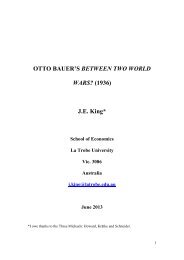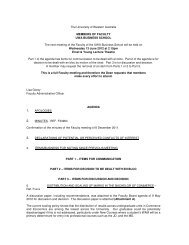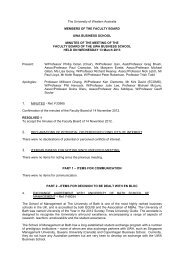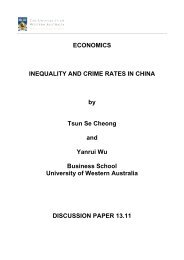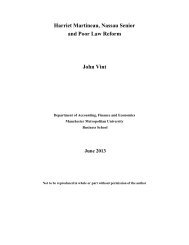A Dynamic Model for determining Inward Foreign ... - Business School
A Dynamic Model for determining Inward Foreign ... - Business School
A Dynamic Model for determining Inward Foreign ... - Business School
Create successful ePaper yourself
Turn your PDF publications into a flip-book with our unique Google optimized e-Paper software.
and error correction model (ECM) are applied to explain the dynamic movement of the<br />
variables in the lagged system.<br />
The quarterly GDP time series data are converted into monthly using Chow and Lin<br />
(1971 372-375) procedure. The idea is that the GDP is observable at the quarterly<br />
frequency, but the indicators used the indicators employed to disaggregate it are observable<br />
at a highest frequency, the data are available on a monthly basis, and are potentially<br />
in<strong>for</strong>mative variables.<br />
In order to illustrate the method, is monthly values of one of the GDP components<br />
and n are set of variables available monthly and contain in<strong>for</strong>mation about .<br />
( )<br />
Where ( ). The monthly error term is ( )with unknown serial correlation<br />
coefficient and V is the error covariance matrix <strong>for</strong>mulated as follows:<br />
[ ]<br />
( )<br />
Taking quarterly averages of equation number (4.50) to obtain the following equation:<br />
( ) or y.=X.β+μ.<br />
Where is the matrix that converts monthly observations to quarterly averages,<br />
where a dot subscript is a quarterly average. ( ) ( ) is the quarterly<br />
error covariance matrix. Finally, the estimated monthly values <strong>for</strong> the GDP component ̂<br />
are computed by Chow-Lin’s <strong>for</strong>mula as follows:<br />
̂ ̂ ̂ ( ) ̂<br />
11




